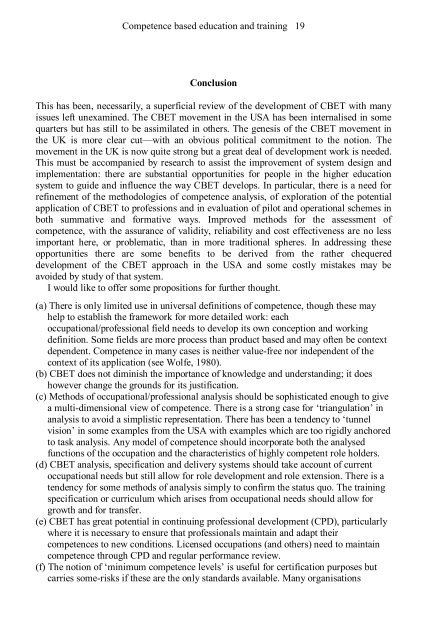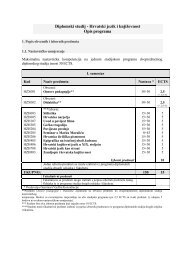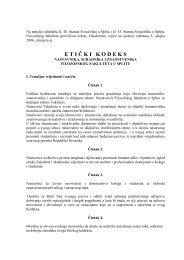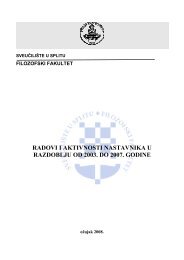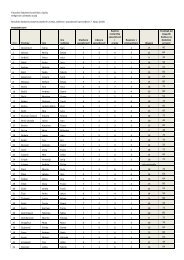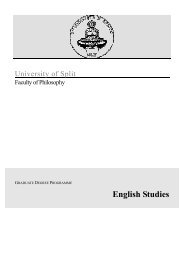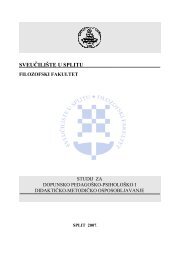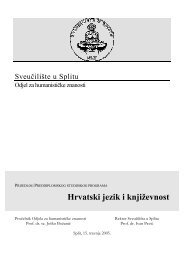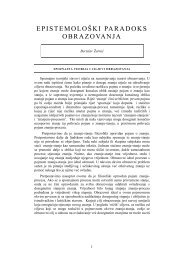Competency Based Education and Training
Competency Based Education and Training
Competency Based Education and Training
You also want an ePaper? Increase the reach of your titles
YUMPU automatically turns print PDFs into web optimized ePapers that Google loves.
Competence based education <strong>and</strong> training 19<br />
Conclusion<br />
This has been, necessarily, a superficial review of the development of CBET with many<br />
issues left unexamined. The CBET movement in the USA has been internalised in some<br />
quarters but has still to be assimilated in others. The genesis of the CBET movement in<br />
the UK is more clear cut—with an obvious political commitment to the notion. The<br />
movement in the UK is now quite strong but a great deal of development work is needed.<br />
This must be accompanied by research to assist the improvement of system design <strong>and</strong><br />
implementation: there are substantial opportunities for people in the higher education<br />
system to guide <strong>and</strong> influence the way CBET develops. In particular, there is a need for<br />
refinement of the methodologies of competence analysis, of exploration of the potential<br />
application of CBET to professions <strong>and</strong> in evaluation of pilot <strong>and</strong> operational schemes in<br />
both summative <strong>and</strong> formative ways. Improved methods for the assessment of<br />
competence, with the assurance of validity, reliability <strong>and</strong> cost effectiveness are no less<br />
important here, or problematic, than in more traditional spheres. In addressing these<br />
opportunities there are some benefits to be derived from the rather chequered<br />
development of the CBET approach in the USA <strong>and</strong> some costly mistakes may be<br />
avoided by study of that system.<br />
I would like to offer some propositions for further thought.<br />
(a) There is only limited use in universal definitions of competence, though these may<br />
help to establish the framework for more detailed work: each<br />
occupational/professional field needs to develop its own conception <strong>and</strong> working<br />
definition. Some fields are more process than product based <strong>and</strong> may often be context<br />
dependent. Competence in many cases is neither value-free nor independent of the<br />
context of its application (see Wolfe, 1980).<br />
(b) CBET does not diminish the importance of knowledge <strong>and</strong> underst<strong>and</strong>ing; it does<br />
however change the grounds for its justification.<br />
(c) Methods of occupational/professional analysis should be sophisticated enough to give<br />
a multi-dimensional view of competence. There is a strong case for ‘triangulation’ in<br />
analysis to avoid a simplistic representation. There has been a tendency to ‘tunnel<br />
vision’ in some examples from the USA with examples which are too rigidly anchored<br />
to task analysis. Any model of competence should incorporate both the analysed<br />
functions of the occupation <strong>and</strong> the characteristics of highly competent role holders.<br />
(d) CBET analysis, specification <strong>and</strong> delivery systems should take account of current<br />
occupational needs but still allow for role development <strong>and</strong> role extension. There is a<br />
tendency for some methods of analysis simply to confirm the status quo. The training<br />
specification or curriculum which arises from occupational needs should allow for<br />
growth <strong>and</strong> for transfer.<br />
(e) CBET has great potential in continuing professional development (CPD), particularly<br />
where it is necessary to ensure that professionals maintain <strong>and</strong> adapt their<br />
competences to new conditions. Licensed occupations (<strong>and</strong> others) need to maintain<br />
competence through CPD <strong>and</strong> regular performance review.<br />
(f) The notion of ‘minimum competence levels’ is useful for certification purposes but<br />
carries some-risks if these are the only st<strong>and</strong>ards available. Many organisations


